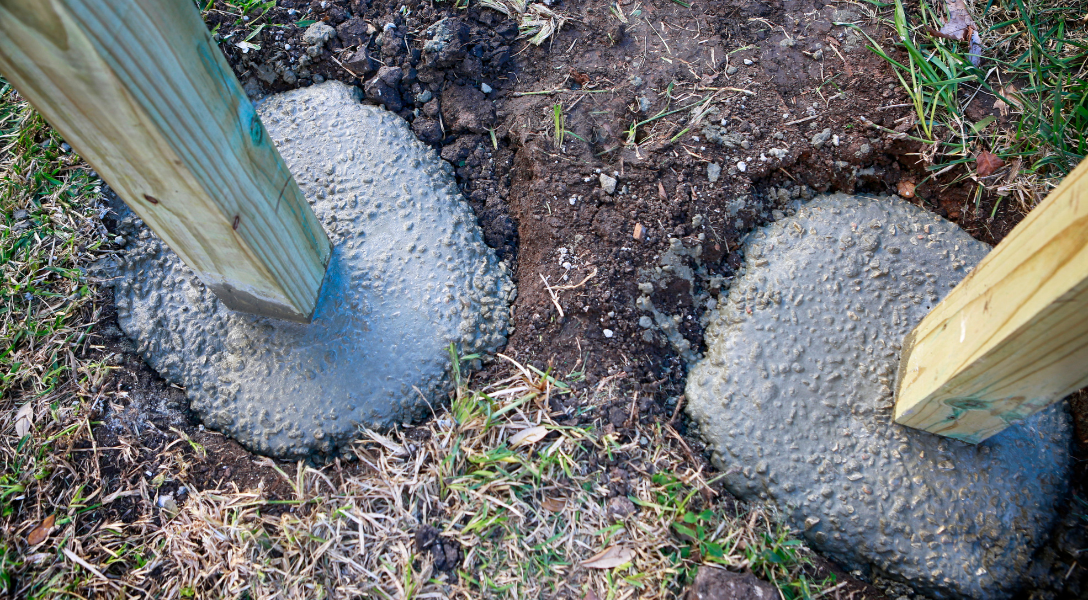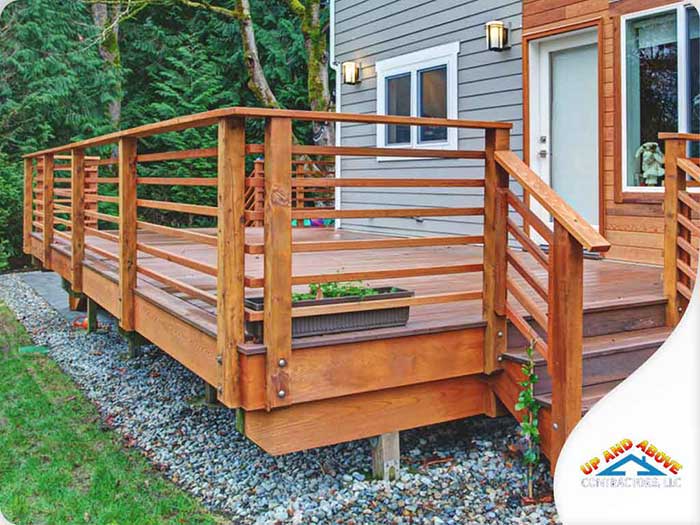Safeguard Foundations, Long-term Perceptions: Mastering the Art of Deck Footings Setup
Safeguard Foundations, Long-term Perceptions: Mastering the Art of Deck Footings Setup
Blog Article
Expert Tips for Installing Deck Footings to Assistance Your Outdoor Space
When it comes to developing a deck, one of the most critical elements to take into consideration is the installation of proper footings. These footings are the structure upon which your exterior area will rest, offering stability and support for years to come. What exactly does it take to set up deck grounds correctly?
Importance of Correct Deck Grounds
Correct deck grounds are necessary for guaranteeing the stability and long life of your exterior area. When constructing a deck, it is essential to focus on the structure on which it will certainly relax. Deck footings offer the required support for the entire framework and aid distribute the weight evenly - Deck Footings. Without solid and effectively mounted footings, your deck may come to be unstable, leading to safety threats and expensive repairs.

Along with stability, correct deck grounds additionally contribute to the long life of your outside space (Deck Footings). Grounds that are designed and constructed to withstand the components and dirt conditions in your area will aid stop the deck from resolving or changing in time. By ensuring the grounds are correctly sized and set up, you can decrease the risk of damages to the deck structure, prolonging its life-span and decreasing the requirement for pricey fixings or substitutes

Picking the Right Type of Grounds
When selecting the proper sort of grounds for your deck, it is vital to take into consideration factors such as dirt problems, regional building regulations, and the general style of your outside area. The sort of footing you select will play an important function in making sure the stability and durability of your deck.
One typical type of footing is the concrete footing. Concrete footings are suitable for many soil problems and supply exceptional assistance for decks.
In some instances, you may require to utilize specific footings, such as pile grounds or deep foundations, if you are building a multi-level or huge deck. These grounds are created to disperse the weight of the deck over a bigger area, guaranteeing stability and avoiding settling or sinking.
Prior to selecting a type of ground, it is necessary to seek advice from regional building ordinance and regulations to make certain compliance. In addition, take into consideration the style and intended usage of your exterior area. Factors such as the dimension, shape, and load-bearing requirements of your deck will certainly affect the type of footing that is most ideal.
Preparing the Ground for Footing Installment
To correctly prepare the ground for footing installment, it is necessary to examine the soil problems and take required actions to make sure stability and durability of the deck. The initial step is to dig deep into the location where the footings will be set up. The depth of the excavation will depend on the frost line in your area and the particular requirements of the deck style. It is necessary to remove any kind of greenery, rocks, or particles from the excavation to guarantee a strong foundation.
When the location has been dug deep into, the next step is to portable the dirt. This can be done utilizing a plate compactor or by utilizing a hand tamper. Compacting the dirt aids to eliminate any type of gaps or air pockets, which can bring about settling and instability gradually.
After condensing the soil, it is very important to lay a layer of crushed rock or smashed stone at the end of the excavation. This will certainly give drainage and assistance to stop water from merging around the footings, which can result in disintegration and instability.
Step-by-Step Overview to Putting Up Deck Footings
After properly preparing the ground for footing setup, the following step is to begin the process of setting up deck footings. This step-by-step guide will supply you with a clear understanding of just how to mount deck grounds for your exterior room.
Identify the location: Begin by marking the settings of the deck footings utilizing stakes and string. Make sure that the places line up with the style and design of your deck.
Dig the check here holes: Make use of a blog post hole digger or an auger to dig the holes for the footings. The depth and size of the openings should remain in conformity with local structure codes and the particular needs of your deck layout.
Degree the openings: Utilize a degree to make certain that the holes are dug to the correct deepness and are degree with each other. (Deck Footings)
Add gravel: Location a layer of crushed rock at the base of each opening to enhance drain and protect against the timber from rotting.
Insert the grounds: Place the grounds right into the openings, making certain they are level and plumb. Use a degree and a gauging tape to make sure precision.
Safeguard the footings: Pour concrete into the holes around the footings, filling them to the top. Make use of a message degree to guarantee the footings stay level as the concrete collections.
Permit time for treating: Let the concrete treatment according to the supplier's directions before proceeding with the deck building.
Typical Mistakes to Stay Clear Of Throughout Footing Installation
One vital element to think about throughout the installation of deck grounds is preventing usual errors that can compromise the security and longevity of your exterior space. While deck grounds may appear like a basic and straightforward component of the building procedure, forgeting certain variables redirected here can lead to expensive repair work and possible security threats down the line.

In addition, ignoring to mount appropriate drain measures can create water to accumulate around the grounds, bring about rot, degeneration, and the eventual weakening of the deck's foundation. Utilizing the incorrect type of footing material or falling short to sufficiently safeguard the footings can jeopardize their architectural honesty.
To stay clear of these blunders, it is important to talk to an expert or adhere to sector guidelines to make sure correct footing installation. By doing so, you can guarantee the stability and durability of your outside room, providing a risk-free and delightful setting for years to come.
Verdict
In final thought, mounting correct deck grounds is crucial for the stability and longevity of your outside area. By picking the appropriate kind of grounds and sufficiently preparing the ground, you can make certain a strong structure for your deck. Adhering to a detailed overview and staying clear of usual blunders throughout footing setup will additionally boost the durability and safety of your deck.
Proper deck grounds are crucial for ensuring the stability and longevity of your outdoor room. The grounds serve as a connection between the deck and the ground, allowing the weight of the deck and its occupants to be spread equally right into the dirt.One typical type of footing is the concrete ground. Insert the grounds: Put the my company footings right into the openings, making sure they are level and plumb. Secure the grounds: Put concrete into the openings around the grounds, filling them to the top.
Report this page